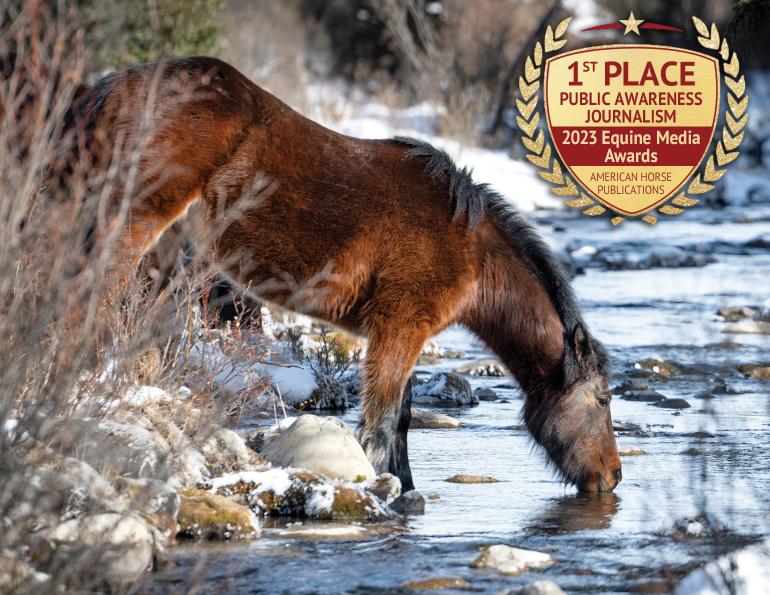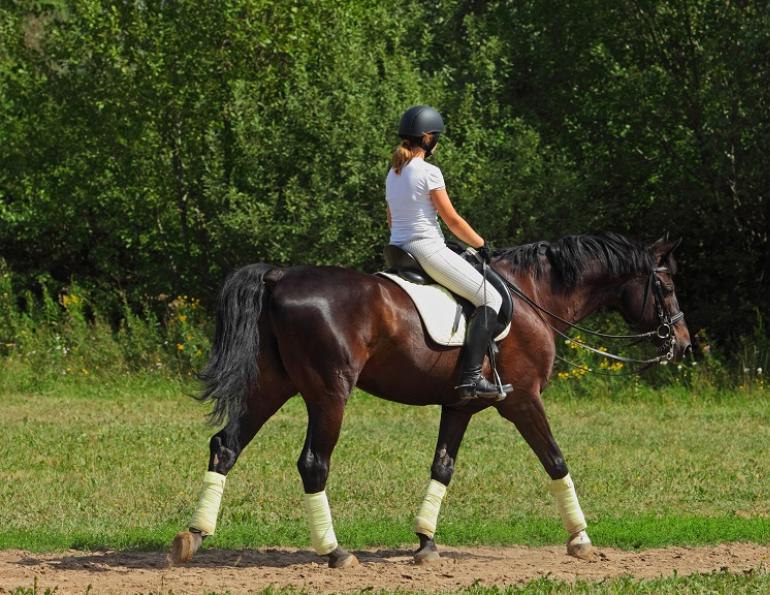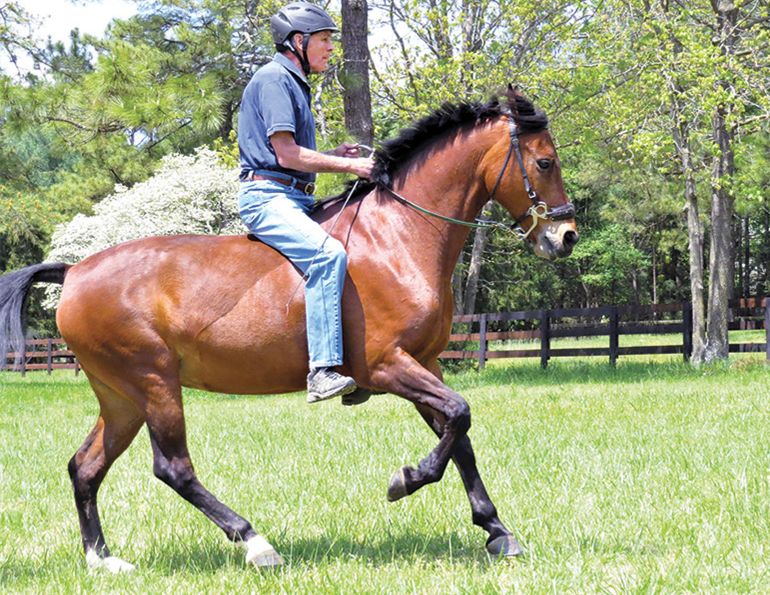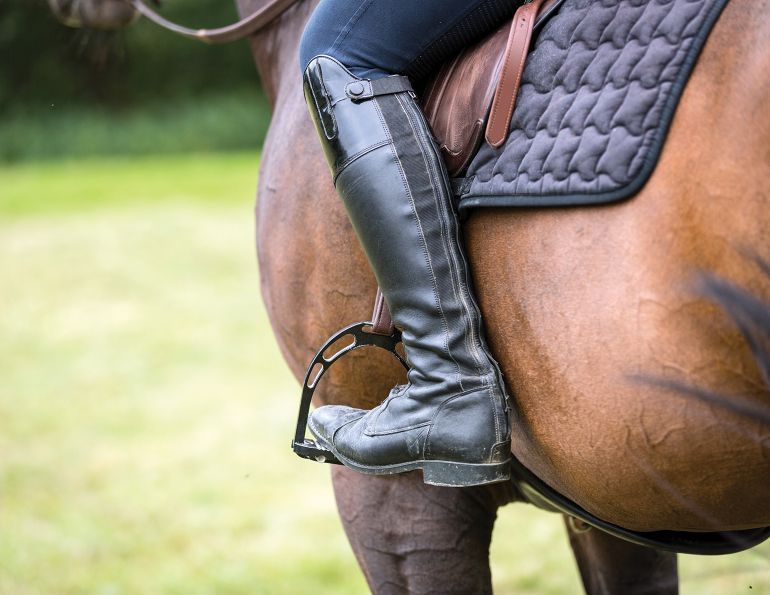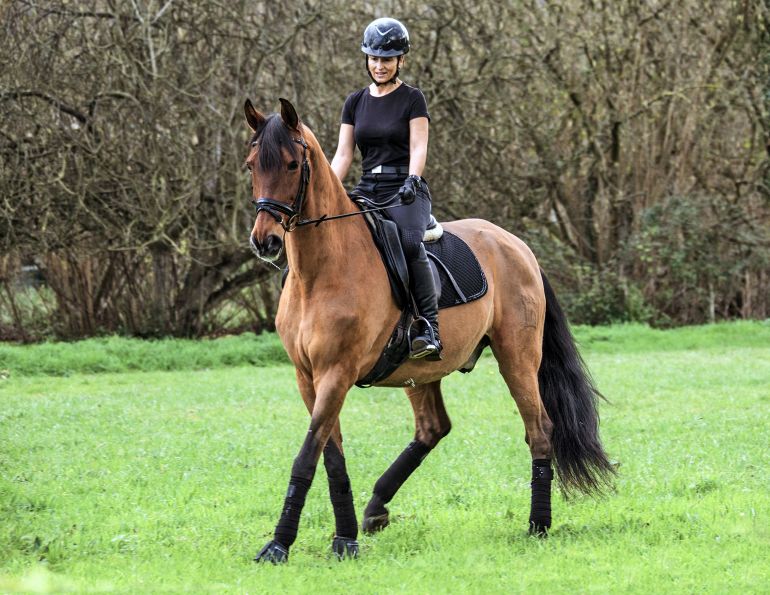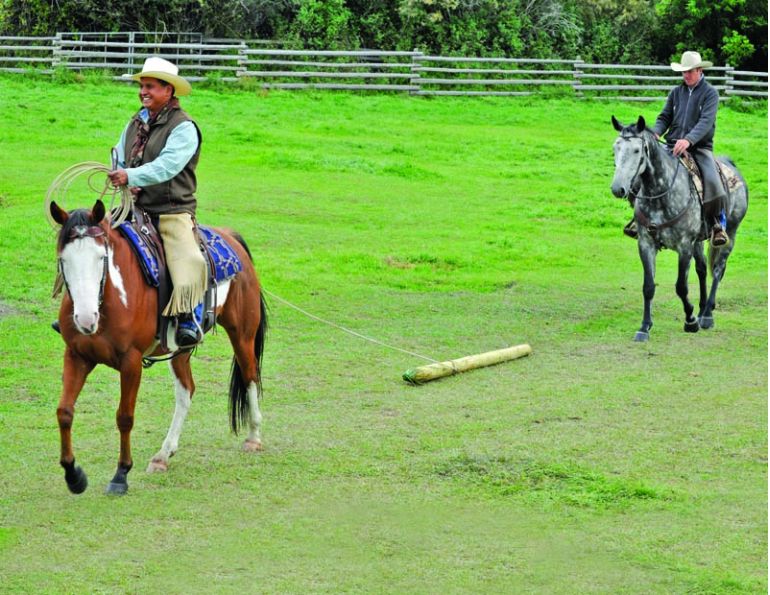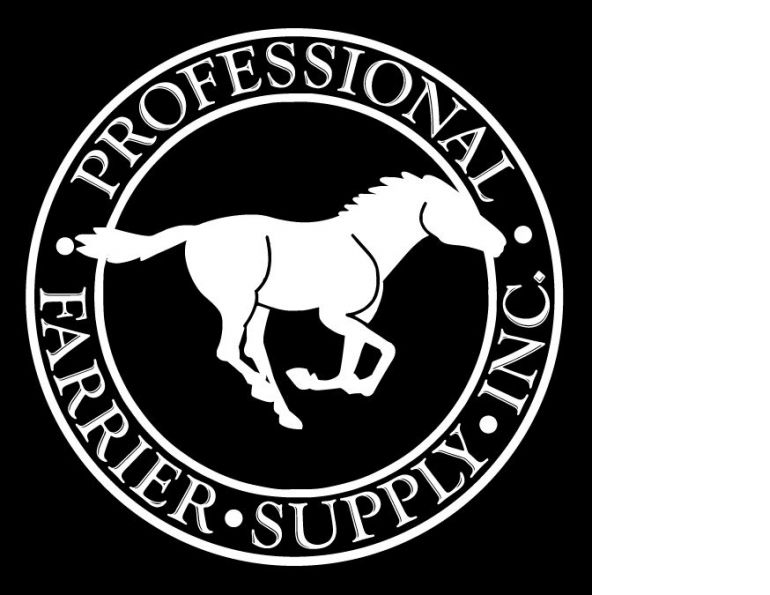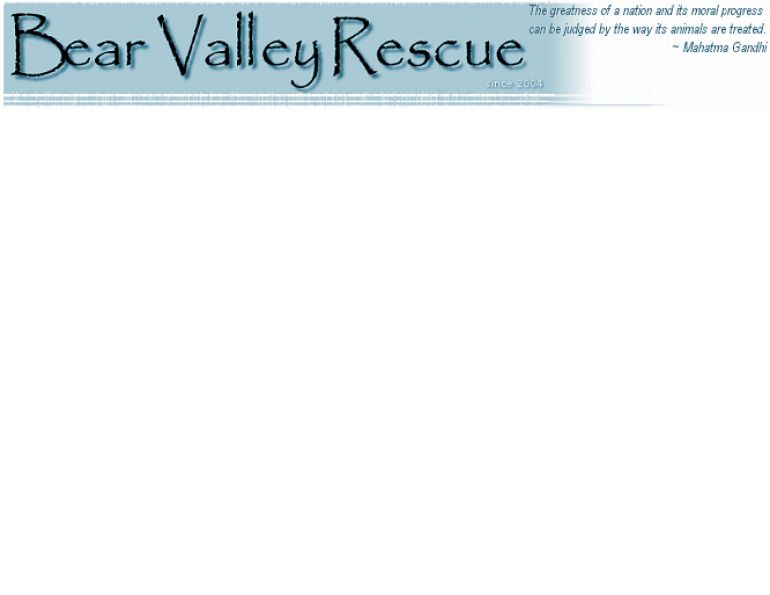By Will Clinging
As the training of the green horse progresses, additional skills are developed as the horse becomes physically and mentally ready. Fitness levels, muscle development, and confidence in the skills already taught will start to play a role in how quickly the horse continues to progress. Specific skills do not need to be taught in any particular order if the fundamental skills have been taught and supported. There is no point in teaching a particular maneuver if the horse does not understand the individual pieces of that maneuver. Once each element is understood, all we have to do is assemble them in the correct order and the maneuver will be there.
As the difficulty level and expectations increase, those fundamental skills may need to be improved. Forward motion, accepting contact from the bit, steering with a direct rein, steering with an indirect or neck rein, adjusting pace, and some basic lateral work such as turn on the forehand and turn on the haunches, are fundamental skills that will be improved and modified as training progresses.
To improve the quality of the steering once we move into trot work, there must first be quality steering at the walk, or at least an understanding on the horse’s part of what the primary and supporting aids are. There must also be an understanding on the rider’s part of when to use each aid, and how much pressure to apply, to get the desired response or correction.
To keep things simple, in this article I will concentrate only on rein aids: inside or direct rein, and outside or indirect or neck rein. When riding with two hands, one hand becomes the primary hand and initiates a turn, while the other plays a supporting role to help maintain the position we have put the horse in. Both hands must be able to do both jobs — if the left hand is primary, the right hand is supporting. If there is a change of direction the hands will switch, and the left will support the right. The more quickly I can adjust the role of my hands, the more effective I can be at asking for and maintaining the position of my horse.
Most green horses are guided primarily with a direct rein. Direct reining is very effective as a primary means of steering the green horse, but overuse will lead to chronic imbalance. The direct rein is also used to help encourage the horse to lower his head and soften into the bit. As a support aid, it is effective to keep the horse from over-bending to the outside when using an indirect or neck rein to steer.
Related: Broke Horse vs Schooled Horse
The indirect rein was introduced in the work in hand, which I did before I started to ride the horse; it is reintroduced under saddle when I teach the horse the counter-bend. As a primary aid for steering, it is used when I want more lateral movement in the turn. As a supporting aid, it helps straighten the horse. It should be a steady source of contact to help keep the horse on the bit, and should help keep the horse from caving in when using a direct rein on the circle.
When steering I want to think about keeping the horse as straight as possible. If traveling on a circle, the more bend there is, the smaller the circle he should be traveling on. I want to set the amount of bend and maintain the same amount of bend by supporting with my hands. If he tries to increase the bend he will hit the outside rein; if he tries to straighten he will hit the inside rein. Essentially, once the turn has started, the primary aid changes to help keep the horse correct.
It important to not overuse the primary aid, in this case the direct rein, and to not under use supporting aids like the outside rein and, eventually, the leg. I try not to get into the position where I am over-asking and then over-correcting when I use rein aids. This is a reactive way to ride. I want to experiment a bit to find the right proportion of each rein to ask my horse as correctly as possible. When the horse is very green, over-exaggerating our rein aids causes the horse to over-bend; this helps the horse figure out what we are asking.
Using too much inside rein will cause the horse to be off balance and bulge his shoulder. Photo: Walter Matos, Copper Moon Ranch
Now that the horse is not so green, we need to work on straightening and putting the correct amount of bend in the body, depending on the intended line of travel.
As I ride, I want to always be aware of what my hands are causing in the way of bend or counter-bend. When riding straight on the rail, I want my horse straight; coming into the corner, I want to add a slight inside bend with my inside rein, supported by enough outside rein to prevent the horse from over-responding to the direct rein. As I come out of the corner and try to circle through the middle of the ring, I am ready with my outside rein to prevent the horse from drifting to the outside of the circle. If he does not respond to the outside aid, I must keep it on or increase the pressure of it until he responds to it. He will likely drift all the way across the ring and it will eventually be the rail that causes him to follow his nose. I will repeat this until I have figured out the timing and amount of pressure needed to prevent him from getting into the drift. It is important not to pull him back onto the circle.
If he continues to push through my outside aids, I will actually put him into a counter-bend by releasing the direct rein and picking up my outside hand, bringing it across his withers. This will effectively change the way he is drifting, and is a deliberate over-correction. It just lets him know that he cannot run through me, and that I will not accept the way he is pushing.
If he continues to push through my outside aids, I will actually put him into a counter-bend by releasing the direct rein and picking up my outside hand, bringing it across his withers. Photo: Walter Matos, Copper Moon Ranch
When I need to resort to this correction, I must be prepared to pick up the inside rein again to keep him from changing direction on me. This is a very strong correction that should be done sparingly and with discretion. If I have to correct him this way more than a couple of times when he comes across the middle of the ring, then I will go back to the walk and work on more counter-bending. Counter-bending and basic shoulder-in at the walk and trot are valuable skills that will make steering much easier when I don’t have the support of the rail.
Timing is an important factor in improving the horse’s steering. I want to be aware of where the horse is likely going to get out of position, and be ready to support him as soon as I feel his position change. The faster we support the change, the easier it is to correct. If you wait until he is totally out of position, it will take more time and pressure to put him back where you want him. As a rider it is now also very important that I am aware of the physical position my horse needs to be in to perform the maneuver I want. The better my preparation in the way of positioning and pace, the more effective I can be. The horse should be able to use all the skills I have taught him and I will also need those skills to continue to improve his performance.
Related: Riding the Green Horse: Pace & Rhythm
Main photo: Walter Matos, Copper Moon Ranch - Now that the horse is not so green, we need to work on straightening and putting the correct amount of bend in his body, depending on the intended line of travel.



